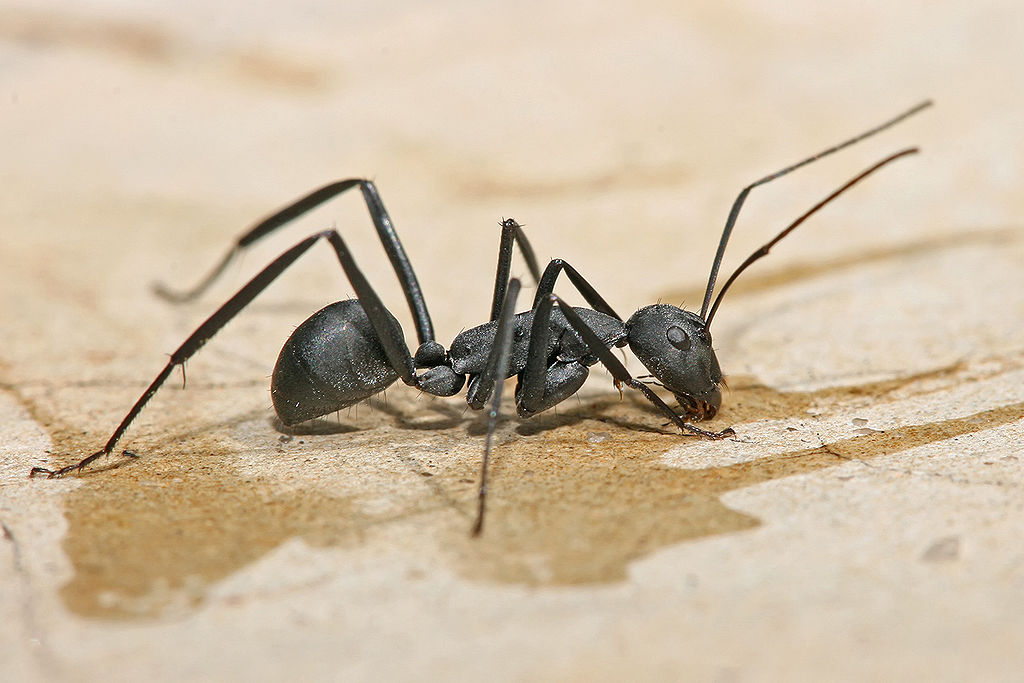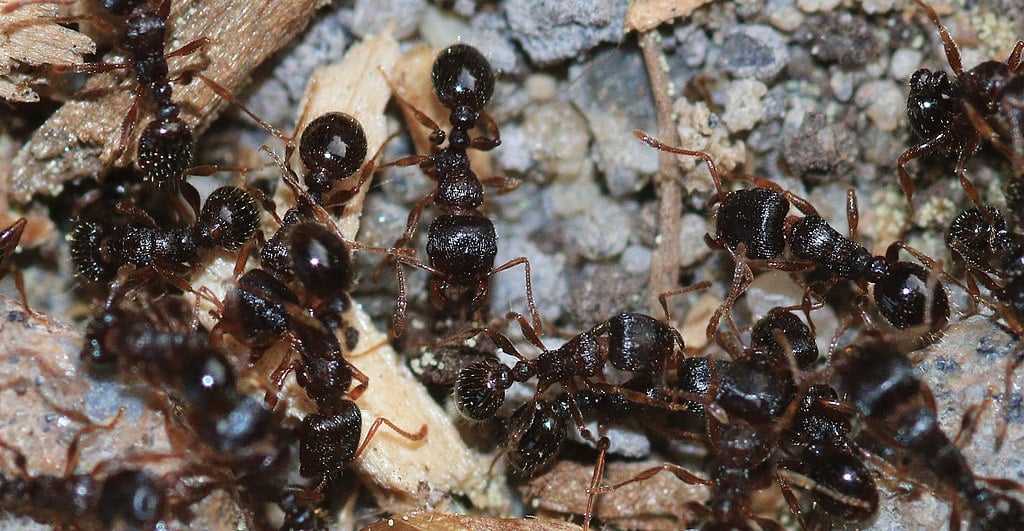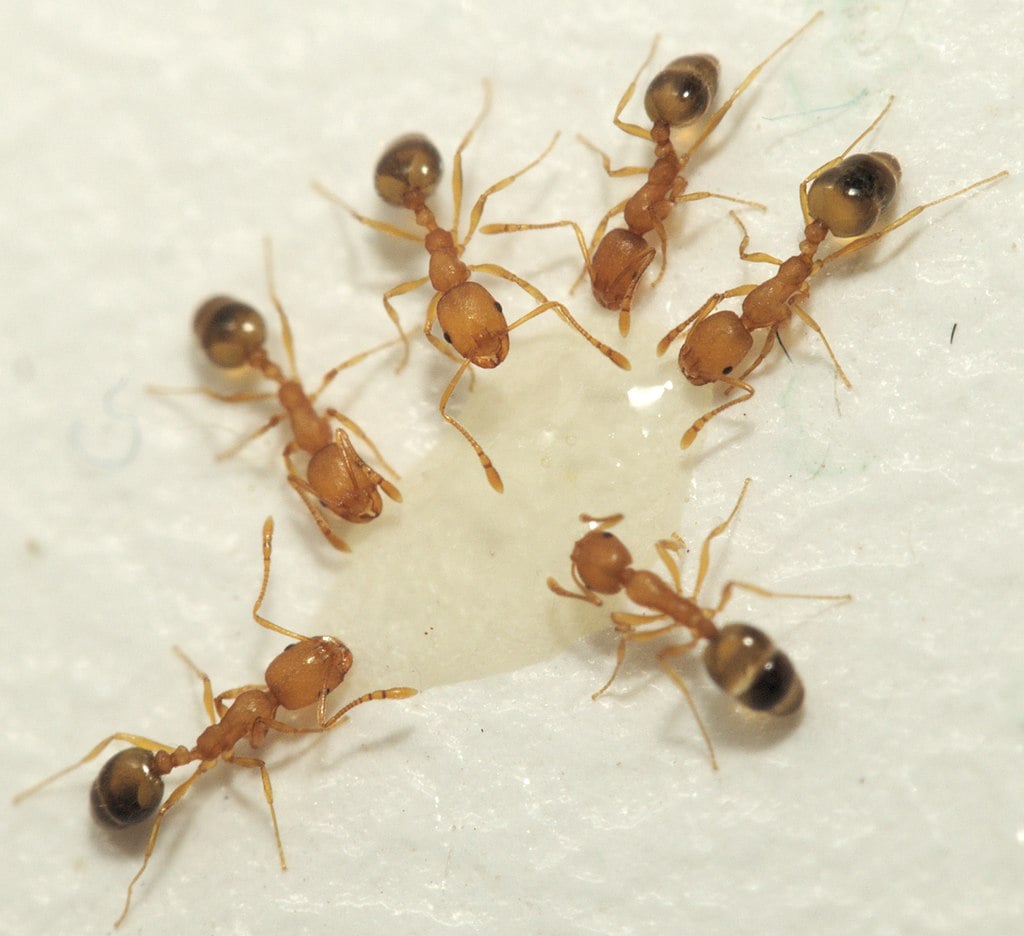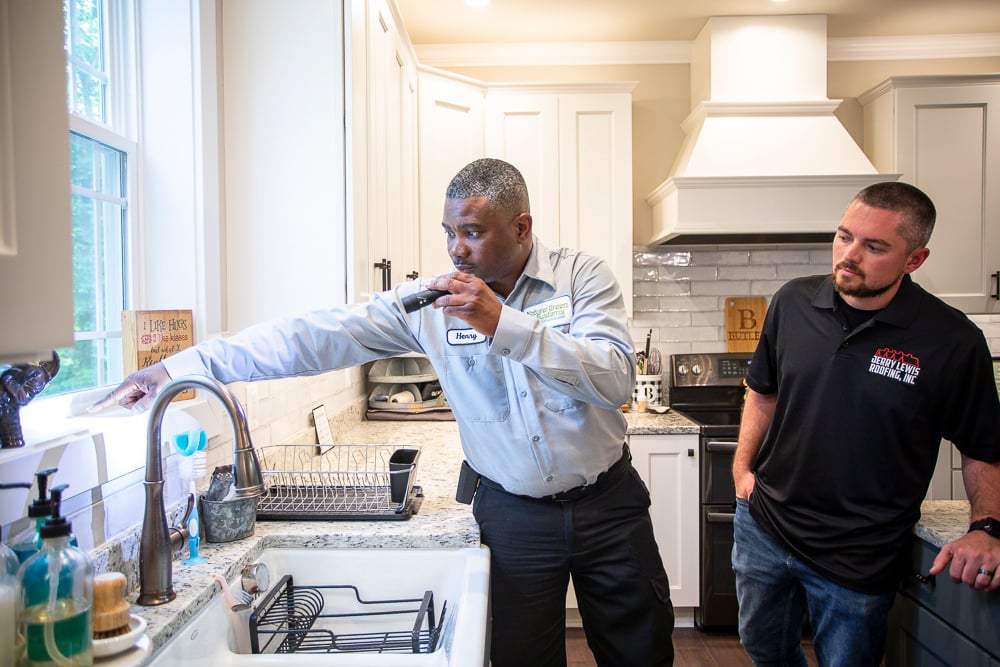VIDEO: 6 Types of Ants in Maryland and How to Keep Them Out
There is nothing worse than going about your regular day and being stopped in your tracks by something you don’t expect and that requires your immediate attention.
Maybe you’re in your pantry and you notice ants in a corner over a spot where something spilled, or worse, they’re coming in and out of an open cereal box. Maybe you’re using the restroom and you see an ant crawling along the floor. Or maybe you’re getting ready to make dinner, and you see an ant crawling across your counter.
Whatever happens, your first reaction is always, “Get out!” And it’s not you running away; you want that ant -- and any of its friends -- gone from your home.
When you see an ant, you might not even notice what kind it is. You want it gone; we get that. But knowing what kind of ants are most common in Maryland homes can actually help you better understand how to keep ants away.
Use This Pest Guide to Identify & Eliminate 28 Different Pests!Let’s review the most common Maryland ants and what you can do to prevent them from taking over your home.
6 Most Common Types of Ants in Maryland
Ants are a nuisance for you because once inside, they can cause a whole lot of problems. They can contaminate food and damage wood.
This makes ants pretty annoying. And while one ant may look just like another, there are actually some differences in the few ants that can most often invade your home here in Central and Southern Maryland.
Here are some typical ants that can get into your home.
1. Odorous Ants
The most common ant species in Maryland homes are odorous ants.
These ants are tiny -- 1/16 to ⅛-inches long. They are typically brown or black, and their name comes from the fact that crushing them creates a nasty smell -- like something rotten. Odorous ants nest under mulch and leaves or in between deck boards or patio pavers. You can even find them in walls or under siding.
Odorous ants nest under mulch and leaves or in between deck boards or patio pavers. You can even find them in walls or under siding.
Since these ants have a sweet tooth, you’ll most likely find them in the kitchen near your food or even near your pet’s food.
2. Carpenter Ants
Carpenter ants are the largest types of ants in Maryland homes. Compared to other ants you see outside that are ⅛ of an inch long, carpenter ants can be up to ⅝ of an inch long. You can’t miss them.
Carpenter ants like moist, rotting wood. They are usually found in door and window frames or sills, where you can find higher moisture and humidity. They also like decks, porches, patios, fences, and sheds. Carpenter ants are attracted to homes with soft wood, wood rot, or those that have water damage. They tunnel into wood, chew it and build nests. While they don’t eat wood; they constantly tunnel in it, causing structural damage. You might see wood shavings, light rustling in your walls, or sagging wood if there are carpenter ants in your home.
Carpenter ants are attracted to homes with soft wood, wood rot, or those that have water damage. They tunnel into wood, chew it and build nests. While they don’t eat wood; they constantly tunnel in it, causing structural damage. You might see wood shavings, light rustling in your walls, or sagging wood if there are carpenter ants in your home.
3. Pavement Ants
Pavement ants are light brown or black. Their legs are usually a lighter color than the rest of their body.
 As if the name doesn’t give it away, pavement ants got their name for their likelihood to nest beneath driveways and other concrete structures. In your home, they can be found under floors and in walls.
As if the name doesn’t give it away, pavement ants got their name for their likelihood to nest beneath driveways and other concrete structures. In your home, they can be found under floors and in walls.
4. Pharaoh Ants
These types of ants are very small - reaching approximately 2 millimeters in length. They stand out with yellow or red bodies and red or black abdomens.
 Pharaoh ants develop large colonies, and to make matters worse, those colonies can then break apart and create their own sub-colonies.
Pharaoh ants develop large colonies, and to make matters worse, those colonies can then break apart and create their own sub-colonies.
5. Acrobat Ants
These ant species in Maryland are light brown to black, and like other ants can be a nuisance in your home. Not only because they can infest your home and cause trouble, but because they can bite when they are disturbed.
 They also acrobatically raise their abdomens over their thorax and head when irritated, which is how they get their name.
They also acrobatically raise their abdomens over their thorax and head when irritated, which is how they get their name.
6. Thief Ants
These yellowish to light brown ants are tiny and often confused with pharaoh ants. Also known as sugar ants, these pests are one of the tiniest household ant species.
 Though they are attracted to sugar and spilled grease in your home, that’s not what they’re known for stealing. They have a habit of thieving larvae, pupae and food from other nearby colonies.
Though they are attracted to sugar and spilled grease in your home, that’s not what they’re known for stealing. They have a habit of thieving larvae, pupae and food from other nearby colonies.
How to Keep Ants Away
Though ants are aggravating, they don’t just come into your house to be irritating. They actually have an agenda.
The most common attraction to ants is food -- any sugars or uncovered foods and crumbs or spills. Even pet food is attractive to them. And once they find a food source, they send messages to hundreds of their friends to tell them to come over.
 Ants are also looking for safety, shelter, and water - a place that’s moist and where they can securely build nests.
Ants are also looking for safety, shelter, and water - a place that’s moist and where they can securely build nests.
For these reasons, you can usually find ants near food, moist areas, and in protected hideouts - under appliances, in walls, and under floors.
Keep ants out of your house by following these tips:
- Clean spills, keep foods secured in airtight containers, and manage trash. Store pet food in sealed containers, too, and ensure pet bowls are clean.
- Minimize moisture by fixing water leaks and ensuring gutters and downspouts guide rain away from your house.
- Keep ants from coming into your home by sealing spots where wires or pipes enter the home and caulking gaps in windows, doors, or foundation cracks.
- Trim trees or shrubs near your home so they don’t touch the house, enabling ants to use branches to get inside.
- Stack firewood at least 20 feet from your home since this is a regular ant nesting spot.
If you see ants in your home, you’ll want to act quickly. A pest control professional can inspect your home and find the source of your problem. They’ll use a contact insecticide to control ants they find. They may also use non-repellant ant control baits with insecticide hidden in a protein or sugar source so the ants think this is food and take it back to their colonies. This is the best way to eliminate the queen and the source of your ant problem: the nest itself. Once your ant infestation is controlled, barrier treatments will help keep ants away because they include a smell or taste that ants dislike.
Once your ant infestation is controlled, barrier treatments will help keep ants away because they include a smell or taste that ants dislike.
Annoyed with the ants you can’t seem to get rid of in your home? Let Natural Green help. We can offer a complete proactive pest control program that includes an inspection and treatment plan to eliminate any of these types of ants and keep them from returning.
Are ants taking over your Central or Southern Maryland home? We’d love to help you take back control. Get started today with a free quote. Together, we’ll prepare a custom plan that is the best choice for you. Then you can stop stumbling upon ants every time you go to your kitchen counter or open your pantry door.
Image Source: Odorous Ant, Carpenter Ants, Pavement Ants, Pharaoh Ants, Acrobat Ant, Thief Ant
There is nothing worse than going about your regular day and being stopped in your tracks by something you don’t expect and that requires your immediate attention.
Maybe you’re in your pantry and you notice ants in a corner over a spot where something spilled, or worse, they’re coming in and out of an open cereal box. Maybe you’re using the restroom and you see an ant crawling along the floor. Or maybe you’re getting ready to make dinner, and you see an ant crawling across your counter.
Whatever happens, your first reaction is always, “Get out!” And it’s not you running away; you want that ant -- and any of its friends -- gone from your home.
When you see an ant, you might not even notice what kind it is. You want it gone; we get that. But knowing what kind of ants are most common in Maryland homes can actually help you better understand how to keep ants away.
Use This Pest Guide to Identify & Eliminate 28 Different Pests!Let’s review the most common Maryland ants and what you can do to prevent them from taking over your home.
6 Most Common Types of Ants in Maryland
Ants are a nuisance for you because once inside, they can cause a whole lot of problems. They can contaminate food and damage wood.
This makes ants pretty annoying. And while one ant may look just like another, there are actually some differences in the few ants that can most often invade your home here in Central and Southern Maryland.
Here are some typical ants that can get into your home.
1. Odorous Ants
The most common ant species in Maryland homes are odorous ants.
These ants are tiny -- 1/16 to ⅛-inches long. They are typically brown or black, and their name comes from the fact that crushing them creates a nasty smell -- like something rotten. Odorous ants nest under mulch and leaves or in between deck boards or patio pavers. You can even find them in walls or under siding.
Odorous ants nest under mulch and leaves or in between deck boards or patio pavers. You can even find them in walls or under siding.
Since these ants have a sweet tooth, you’ll most likely find them in the kitchen near your food or even near your pet’s food.
2. Carpenter Ants
Carpenter ants are the largest types of ants in Maryland homes. Compared to other ants you see outside that are ⅛ of an inch long, carpenter ants can be up to ⅝ of an inch long. You can’t miss them.
Carpenter ants like moist, rotting wood. They are usually found in door and window frames or sills, where you can find higher moisture and humidity. They also like decks, porches, patios, fences, and sheds. Carpenter ants are attracted to homes with soft wood, wood rot, or those that have water damage. They tunnel into wood, chew it and build nests. While they don’t eat wood; they constantly tunnel in it, causing structural damage. You might see wood shavings, light rustling in your walls, or sagging wood if there are carpenter ants in your home.
Carpenter ants are attracted to homes with soft wood, wood rot, or those that have water damage. They tunnel into wood, chew it and build nests. While they don’t eat wood; they constantly tunnel in it, causing structural damage. You might see wood shavings, light rustling in your walls, or sagging wood if there are carpenter ants in your home.
3. Pavement Ants
Pavement ants are light brown or black. Their legs are usually a lighter color than the rest of their body.
 As if the name doesn’t give it away, pavement ants got their name for their likelihood to nest beneath driveways and other concrete structures. In your home, they can be found under floors and in walls.
As if the name doesn’t give it away, pavement ants got their name for their likelihood to nest beneath driveways and other concrete structures. In your home, they can be found under floors and in walls.
4. Pharaoh Ants
These types of ants are very small - reaching approximately 2 millimeters in length. They stand out with yellow or red bodies and red or black abdomens.
 Pharaoh ants develop large colonies, and to make matters worse, those colonies can then break apart and create their own sub-colonies.
Pharaoh ants develop large colonies, and to make matters worse, those colonies can then break apart and create their own sub-colonies.
5. Acrobat Ants
These ant species in Maryland are light brown to black, and like other ants can be a nuisance in your home. Not only because they can infest your home and cause trouble, but because they can bite when they are disturbed.
 They also acrobatically raise their abdomens over their thorax and head when irritated, which is how they get their name.
They also acrobatically raise their abdomens over their thorax and head when irritated, which is how they get their name.
6. Thief Ants
These yellowish to light brown ants are tiny and often confused with pharaoh ants. Also known as sugar ants, these pests are one of the tiniest household ant species.
 Though they are attracted to sugar and spilled grease in your home, that’s not what they’re known for stealing. They have a habit of thieving larvae, pupae and food from other nearby colonies.
Though they are attracted to sugar and spilled grease in your home, that’s not what they’re known for stealing. They have a habit of thieving larvae, pupae and food from other nearby colonies.
How to Keep Ants Away
Though ants are aggravating, they don’t just come into your house to be irritating. They actually have an agenda.
The most common attraction to ants is food -- any sugars or uncovered foods and crumbs or spills. Even pet food is attractive to them. And once they find a food source, they send messages to hundreds of their friends to tell them to come over.
 Ants are also looking for safety, shelter, and water - a place that’s moist and where they can securely build nests.
Ants are also looking for safety, shelter, and water - a place that’s moist and where they can securely build nests.
For these reasons, you can usually find ants near food, moist areas, and in protected hideouts - under appliances, in walls, and under floors.
Keep ants out of your house by following these tips:
- Clean spills, keep foods secured in airtight containers, and manage trash. Store pet food in sealed containers, too, and ensure pet bowls are clean.
- Minimize moisture by fixing water leaks and ensuring gutters and downspouts guide rain away from your house.
- Keep ants from coming into your home by sealing spots where wires or pipes enter the home and caulking gaps in windows, doors, or foundation cracks.
- Trim trees or shrubs near your home so they don’t touch the house, enabling ants to use branches to get inside.
- Stack firewood at least 20 feet from your home since this is a regular ant nesting spot.
If you see ants in your home, you’ll want to act quickly. A pest control professional can inspect your home and find the source of your problem. They’ll use a contact insecticide to control ants they find. They may also use non-repellant ant control baits with insecticide hidden in a protein or sugar source so the ants think this is food and take it back to their colonies. This is the best way to eliminate the queen and the source of your ant problem: the nest itself. Once your ant infestation is controlled, barrier treatments will help keep ants away because they include a smell or taste that ants dislike.
Once your ant infestation is controlled, barrier treatments will help keep ants away because they include a smell or taste that ants dislike.
Annoyed with the ants you can’t seem to get rid of in your home? Let Natural Green help. We can offer a complete proactive pest control program that includes an inspection and treatment plan to eliminate any of these types of ants and keep them from returning.
Are ants taking over your Central or Southern Maryland home? We’d love to help you take back control. Get started today with a free quote. Together, we’ll prepare a custom plan that is the best choice for you. Then you can stop stumbling upon ants every time you go to your kitchen counter or open your pantry door.
Image Source: Odorous Ant, Carpenter Ants, Pavement Ants, Pharaoh Ants, Acrobat Ant, Thief Ant
Share This
Topics: Pest Control, Video


